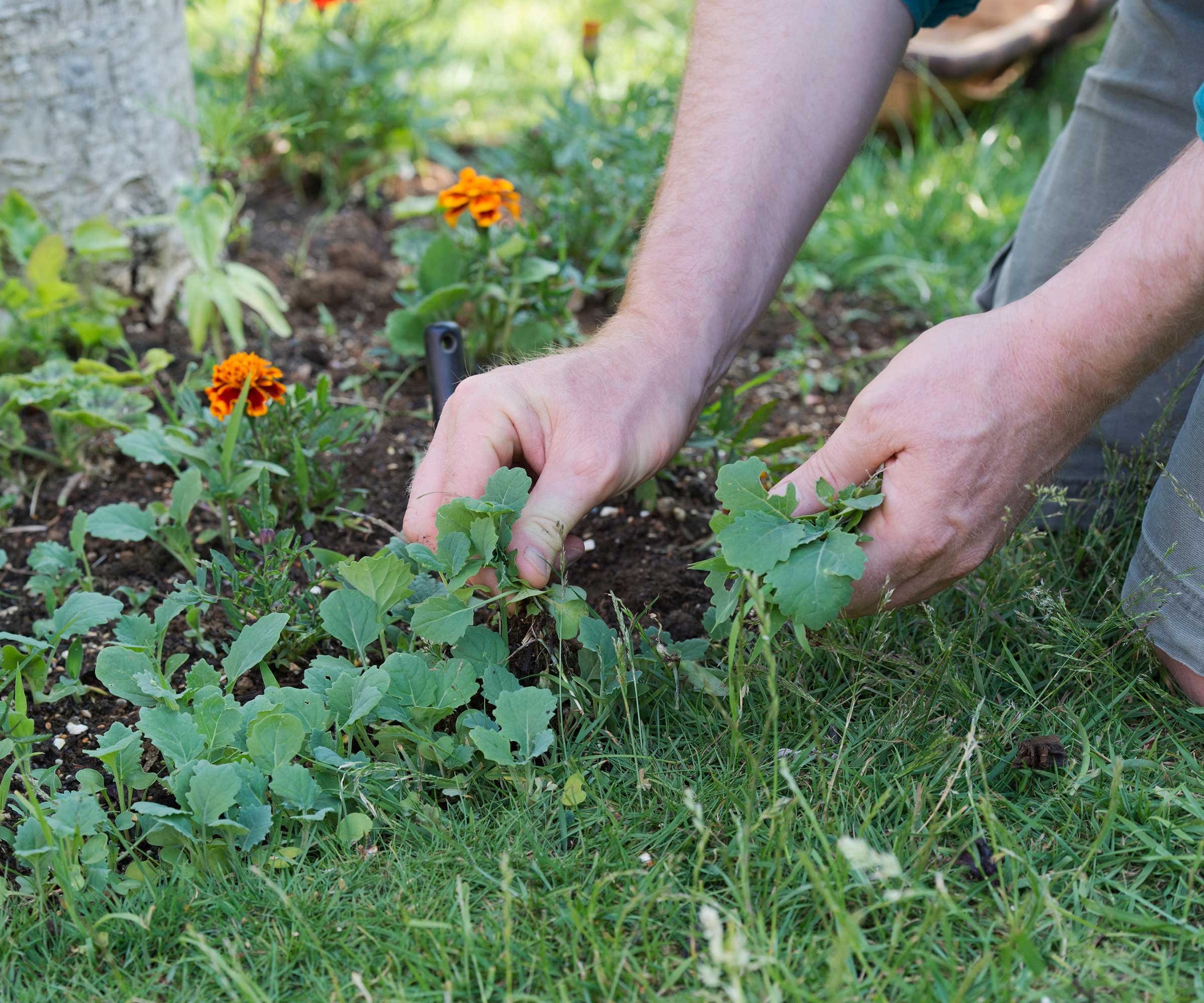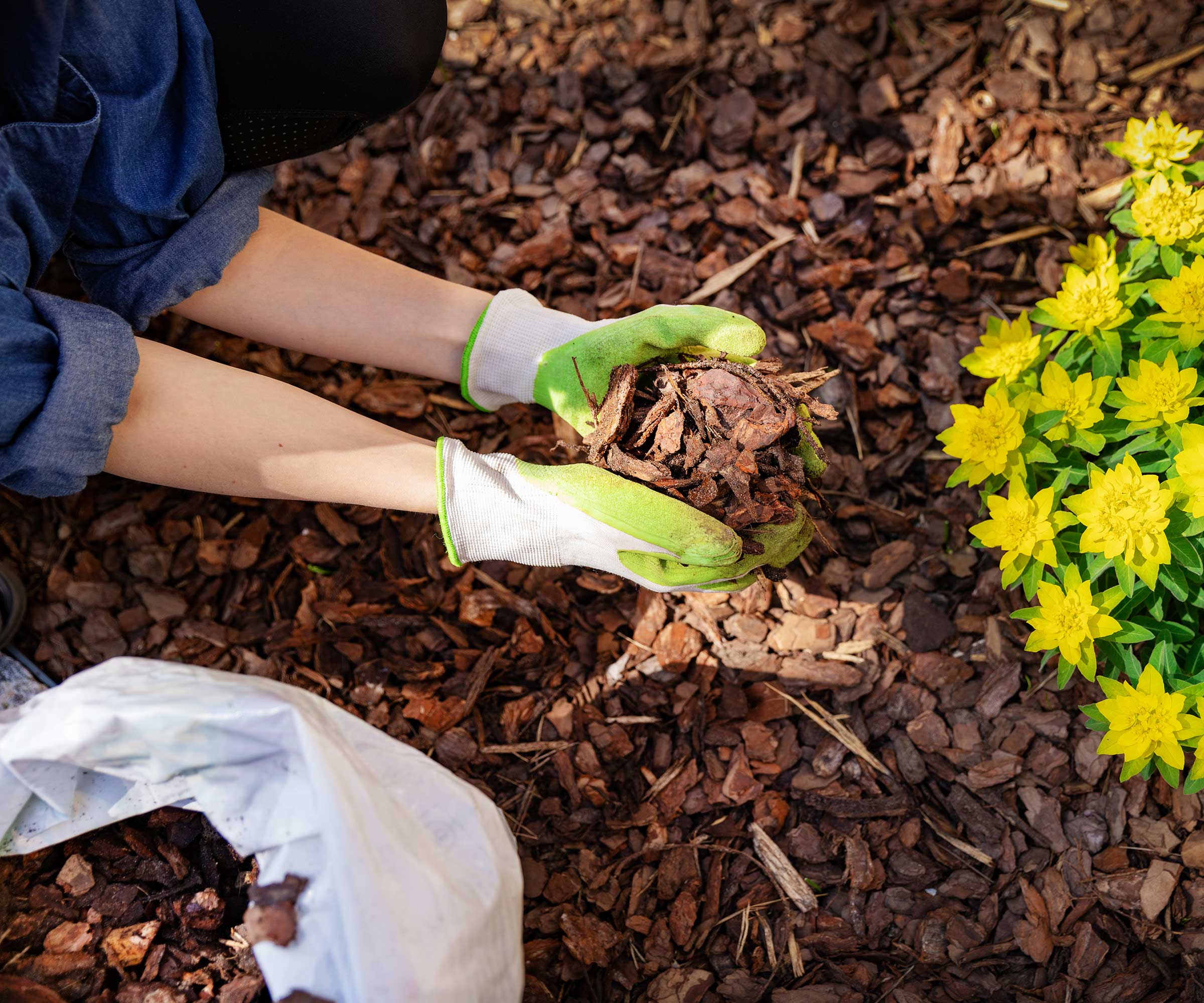How to kill weeds not plants – keep flowers and shrubs safe with these expert tips
Smarten up your flower beds this spring with this advice


Q: I have two large flower beds in my backyard that are full of perennial shrubs and herbaceous flowers. With the arrival of warmer weather, I've noticed that weeds have started to crop up wherever they can. Not only do they look unsightly, but I'm also worried they will steal precious nutrients from the soil and smother the surrounding plants. How can I tackle them safely, without causing damage to the ones that are actually meant to be there?
A: When getting rid of weeds in closely-packed flower beds, you need to act quickly but with caution. The safest methods are the ones that give you the most control – so if possible, try and prise them out by hand by the roots, using a small hand trowel. This multifunctional Berry&Bird tool from Amazon is perfect for the job. Try to avoid disturbing the roots of nearby plants. This is also a good way to tackle lawn weeds without killing the grass.
It's easier said than done for some types of weeds, however. For instance, quackgrass forms a network of scrambling rhizomes deep beneath the surface of the soil, and even if you leave a tiny fraction of it in there, it will try to regrow. But for the trickier interlopers, there are other actions you can take.

A former professional gardener and allotment-grower, Holly now spends her days writing about plants and outdoor living for Homes and Gardens, caring for her large collection of houseplants, and drawing her favorite blooms.

Remove weeds by hand where you can
Applying mulch to suppress weeds
Whether using compost, shredded bark, leaf mold, or some other type of mulch, applying a relatively thick layer all over your flower beds in spring can help to smother weeds before they get a chance to take hold. What's more, such organic mulches will add nutrients to the soil as they break down. Keep it away from the stems of your plants, otherwise it can encourage them to rot.
For the weeds that have already sprouted, try and remove as many as you can by hand before mulching. Dig up the easier ones by the roots, and cut the rest down using a small hoe. Keep an eye on the area and repeat this if any poke their way through the mulch – with time, the roots should hopefully exhaust themselves and the weeds will die.

Mulching in spring will smother weeds before they take over
Using herbicides in flower beds
Some perennial weeds that have already established leafy growth – such as thistles, docks, dandelions and bindweed – are best dealt with by herbicide spray, says John Negus, a garden expert from Homes & Gardens.
'The best weedkillers to use are those with glyphosate as their active ingredient,' he says. These travel down to the roots, killing the whole plant. However, John explains that these are non-selective and will kill any plant they come into contact with, so you'll need to be very careful not to spray any plants you wish to keep.
Check the weather before you apply. Rain and wind can make the spray wash into or drift towards your garden plants and kill them, too, John warns. If you're really concerned, you could carefully wrap your plants in plastic sheeting before applying the weed killer, he continues, which should take a week or two to work. Reapply the herbicide if new leaves appear.
For a bit more control, John suggests using a gel formula, such as Roundup Precision Gel, available on Amazon, which is dabbed or painted onto the leaves. 'This takes away the risk of the spray drifting and means you can tackle just those plants you wish to get rid of.'
Alternatively, you could remove the plants you want to keep and plant them in a quarantined bed, making sure that there are no weeds mixed in with the roots. This is much more time-consuming, though, and some plants may suffer from transplant shock.

John has been a garden journalist for over 50 years and regularly answers readers' questions in Amateur Gardening magazine. He has also written four books and has delivered many talks over the years on horticulture.
Adding ground cover plants
Another way to reduce the number of weeds growing in borders is to fill in gaps with ground-cover plants. These will grow to create a carpet that will block sunlight and water from any weed seeds, preventing them from germinating.
As long as the area has good light, John recommends the following: Cotoneaster ‘Coral Beauty’ (an evergreen with white summer flowers and a profusion of bright-orange berries); Cotoneaster dammeri (an equally zestful ground-cover plant that is evergreen and prized for its reflective red berries); and Lonicera pileata (a rampant spreader with box-like green leaves). Just check they're not considered invasive plants in your area, first.
It's almost impossible to avoid the odd weed from growing in flower beds, but it's not a reason to despair. As long as you try to remove them as quickly as possible and stay vigilant, you'll be able to keep your borders looking their best.
Sign up to the Homes & Gardens newsletter
Design expertise in your inbox – from inspiring decorating ideas and beautiful celebrity homes to practical gardening advice and shopping round-ups.

Holly started writing about gardening five years ago, and she is a regular contributor to Homes & Gardens. She has also written many gardening features for Woman & Home and Real Homes, too. She has previous experience as a professional gardener, where she helped to plant and maintain private gardens. Holly has also looked after allotment plots over the years and loves to grow her own flowers and veggies from seed. In her spare time, she enjoys visiting local gardens, botanical drawing, and tending to her ever-growing collection of houseplants.
-
 Miley Cyrus breaks a cardinal decorating rule with her 'floating table' – her unexpected layout transforms a dead space into a stylish breakfast area
Miley Cyrus breaks a cardinal decorating rule with her 'floating table' – her unexpected layout transforms a dead space into a stylish breakfast areaThe singer tosses aside the maxim that furniture shouldn't be floating in the middle of the room with an innovative kitchen layout
By Sophie Edwards Published
-
 It’s a concept straight out of a fashionista's playbook, but I used the Sandwich Method to organize my kitchen shelves – it’s never looked sleeker
It’s a concept straight out of a fashionista's playbook, but I used the Sandwich Method to organize my kitchen shelves – it’s never looked sleekerIt transformed messy to mesmerizing in a matter of seconds
By Punteha van Terheyden Published